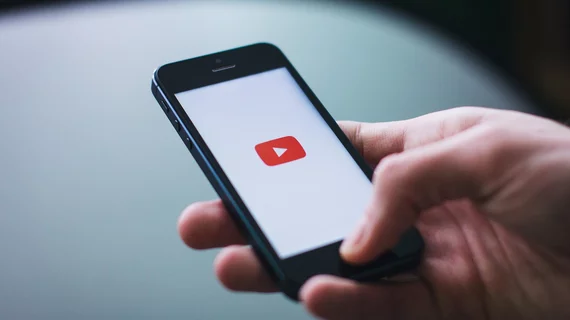YouTube remains an untapped resource to help educate the next generation of radiologists
Medical educators are quickly beginning to understand the power of online learning, particularly as the pandemic forces students to study remotely. To help train the next generation of radiologists, the field should look no further than video giant YouTube.
A number of radiology organizations currently run successful YouTube channels, including the Radiological Society of North America, Yale Radiology and Biomedical Imaging, and Johns Hopkins Hospital’s CTisus channel. The latter has some 25,000 subscribers, making it the most popular imaging-focused channel.
Despite this fact, there’s much more the field can do to enhance imaging content across the platform, Lilly Kauffman, BA, and colleagues with Johns Hopkins explained Wednesday.
“As radiology and medicine evolve, the ways in which the two are taught should further change with the times, as well, and embrace the use of social media, meeting more students where they choose to spend time,” the authors added in Academic Radiology. “Video instruction may be the future of radiology education and YouTube can be a powerful way to promote such content.”
Kauffman et al. wanted to know what content draws people in. They pulled 484 videos posted to the CTisus channel and divided them into four categories: Short displays of images with or without voiceover explanation, known as “case clips”; quick 15- to 20-minute Facebook Live discussions posted to YouTube; formal lectures; and 10-question quizzes posted monthly. They analyzed each for views, likes, shares and other metrics between July 2017 and June 2020.
Overall, Facebook Live videos dominated other formats, garnering the most views, likes, shares and subscribers gained per 30 days. Case clip content, meanwhile, came in at the bottom for all of the aforementioned categories.
The team did find that viewers were more engaged overall with lectures, despite their longer run times. Neuro-based videos achieved the most views per 30 days and AI tallied more likes and subscribers. Physics content was highly shared, while technology and vascular videos ranked in the bottom half for all categories.
So what can the specialty take away from these findings? For one, radiology students are interested in using the site to learn and educators can curate lists of trustworthy channels to help them do so.
YouTube does lack peer review and it’s up to the viewer to verify the credibility of videos, the authors noted. And while there is plenty of quality content, it may be hard for users to find. But this shouldn’t push the radiology community away.
Instead, it may be a “golden opportunity” to bring high-quality radiology content to the platform, the authors explained.
“As radiology professionals migrate to video, their attention will turn to the video giant,” Kauffman et al. added. “The radiology community should not ignore YouTube because of its pitfalls but must work to enhance the role it can for radiology education because of its popularity. In response, educators can benefit from having an increased presence in the radiology community, receiving a free copyright tool, and earning money from their work.”

